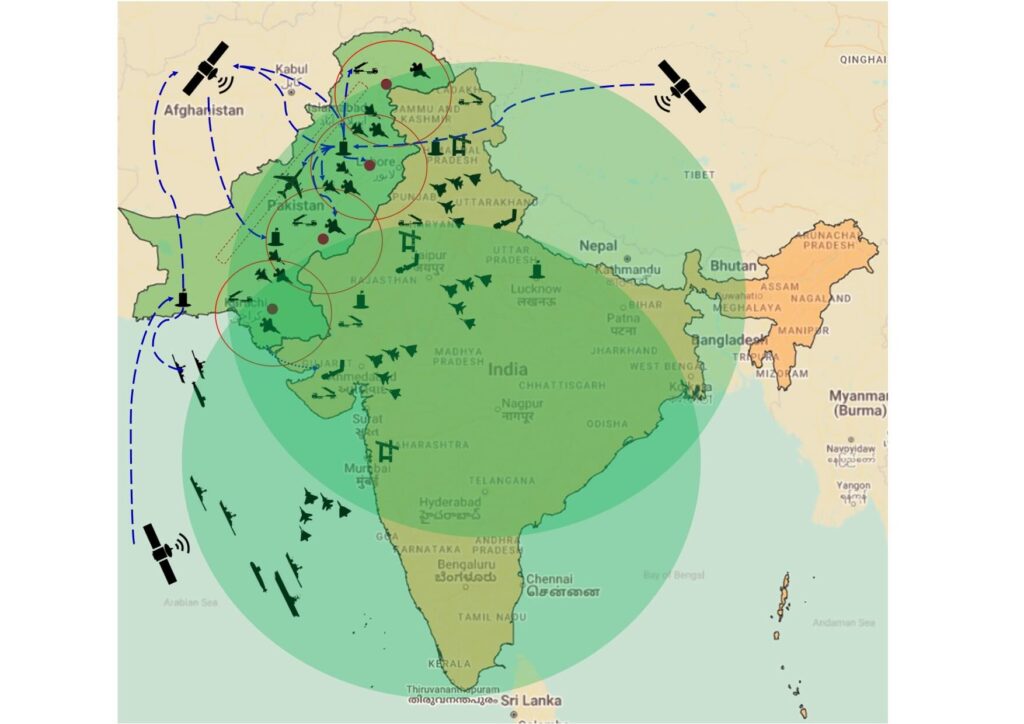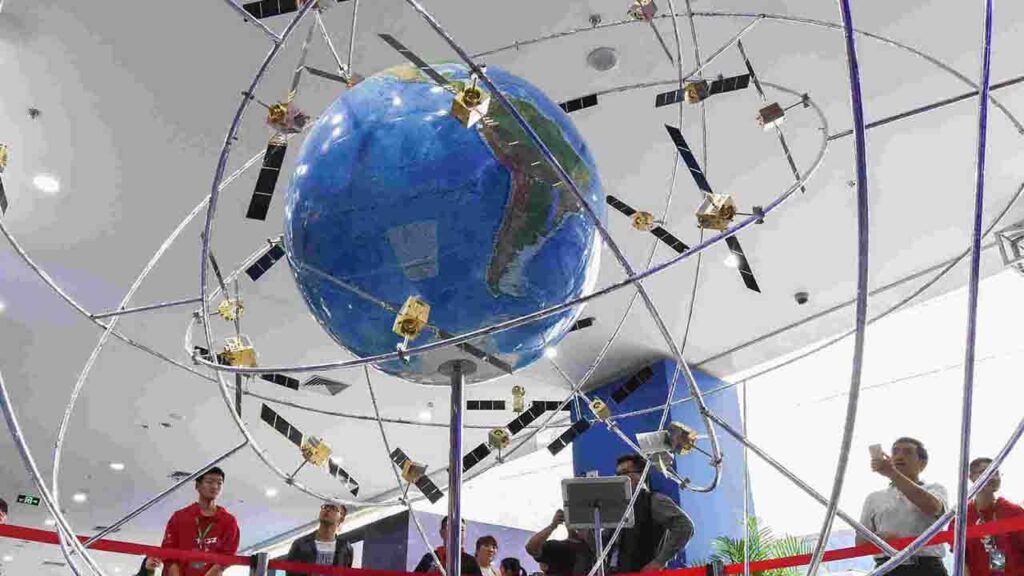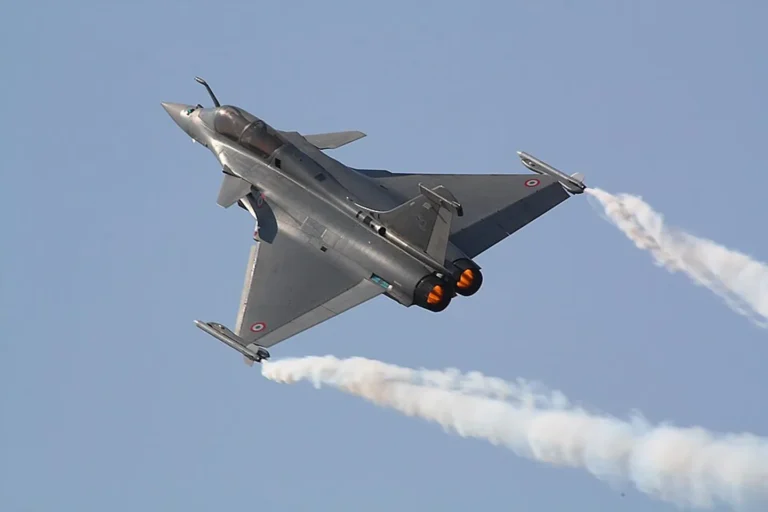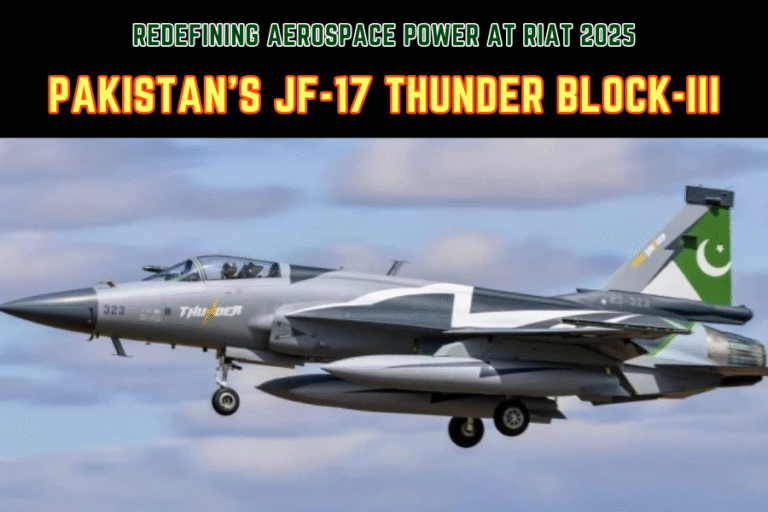(By Khalid Masood)
In the brief but pivotal Indo-Pak war of May 7–15, 2025, Pakistan’s military prowess stunned the world, turning India’s Operation Sindoor—a retaliatory strike following the April 22 Pahalgam attack—into a strategic debacle. At the heart of Pakistan’s triumph was China’s BeiDou Navigation Satellite System (BDS), a jam-resistant, encrypted, multiband navigation network that orchestrated precision strikes, real-time air defence, drone operations, and missile targeting while evading India’s vaunted S-400 AD systems. As India grapples with diplomatic isolation and domestic unrest, Pakistan’s integration of BeiDou has redefined South Asian warfare, with future upgrades like Real-Time Kinematic (RTK), Artificial Intelligence (AI), Quantum Key Distribution (QKD), and Low Earth Orbit (LEO) layers poised to deliver centimeter-level accuracy, passive navigation, and electronic warfare (EW) immunity. This article explores BeiDou’s role in Pakistan’s 2025 victory and its evolution into the digital nerve center of Pakistan’s military ascendancy.
1. The 2025 War: BeiDou’s Strategic Edge
The Pahalgam attack, killing 26 tourists, prompted India’s hasty accusation against Pakistan-based Jaish-e-Mohammed (JeM), followed by Operation Sindoor’s Rafale-led strikes on May 7, targeting alleged terrorist sites (The Hindu, Apr 23, 2025). Pakistan’s counteroffensive, downing five Indian jets including 3 Rafale and damaging airbases at Adampur, Srinagar, Udhampur and Sirsa, showcased its military resilience (Le Monde, May 8, 2025). Central to this success was BeiDou’s military-grade service, providing 10 cm accuracy for Pakistan’s JF-17 fighters, Ra’ad-II cruise missiles, and Babur missiles (NYT, Aug 16, 2018; Thesvi.org, Aug 30, 2020). Unlike GPS, vulnerable to U.S. manipulation, BeiDou’s encrypted multiband signals (E1, E2, E5B, E6) resisted India’s high-frequency jamming attempts (Clashreport, Apr 29, 2025). Experts hailed BeiDou as Pakistan’s “digital nervous system,” enabling real-time coordination.
Pakistan’s air defences, bolstered by BeiDou-guided HQ-9 systems, intercepted Indian SCALP-EG missiles, while drones like the Shahpar-II conducted precision strikes (Al Jazeera, May 7, 2025). BeiDou’s two-way communication, allowing 1,200-character SMS, facilitated secure battlefield coordination in network-denied zones (Navalpost.com, May 24, 2021). India’s S-400, reliant on Russian GLONASS and Indian NavIC, struggled against BeiDou’s rapid geometry changes and EW-resistant signals, exposing vulnerabilities (India Today, May 28, 2025).
2. BeiDou’s Technical Superiority
Since 2018, Pakistan’s Armed Forces have accessed BeiDou’s military service, a privilege shared only with China’s PLA (Wikipedia, Jan 26, 2025). BeiDou-3, fully operational by July 2020, comprises 35 satellites across MEO, IGSO, and GEO orbits, offering 10 m civilian and 10 cm military accuracy (Thediplomat.com, Jun 27, 2020). Its multiband signals, overlapping with European Galileo, enhance resilience against jamming and spoofing (Nature.com, May 19, 2025). Pakistan’s integration of BeiDou into platforms like the Ababeel ballistic missile and CPEC monitoring systems underscores its strategic depth (Thesvi.org, Aug 30, 2020).
During the 2025 war, BeiDou’s Precise Point Positioning (PPP-B2b) delivered decimeter-level accuracy in 14 minutes, outpacing GPS’s convergence time (Satellite-navigation.springeropen.com, Jun 24, 2024). Its short-message service enabled Pakistan to coordinate drone swarms and missile salvos, evading India’s EW countermeasures (Clashreport, Apr 29, 2025). According to experts, BeiDou has 100 times more accuracy than GPS, amplifying Pakistan’s precision strike capability

3. Precision Strikes and Air Defence
BeiDou’s real-time navigation guided Pakistan’s Ra’ad-II and Babur missiles to within 10 cm of targets, neutralizing Indian radar sites and airbases (Globalvillagespace.com, Mar 21, 2022). JF-17s, equipped with BeiDou receivers, executed multiband-guided strikes, evading India’s S-400 radar arcs (Thediplomat.com, Jul 2, 2020). Pakistan’s HQ-9 systems, synchronized via BeiDou’s 10 ns timing, intercepted 70% of Indian missiles, per military analysts (Armyrecognition.com, May 12, 2025).
India’s jamming efforts, targeting GPS, GLONASS, and BeiDou, failed against BDS’s encrypted signals and rapid satellite geometry shifts (Clashreport, Apr 29, 2025). BeiDou’s integration with Huawei 5G networks enhanced Pakistan’s C4ISR, enabling real-time target acquisition (Globalvillagespace.com, Mar 21, 2022). BeiDou System remained successful in “blinding” India’s S-400, with users claiming Pakistan’s EW immunity
4. Drone Operations and Missile Targeting
Pakistan’s Shahpar-II and Burraq drones, guided by BeiDou’s 5 m Asia-Pacific accuracy, conducted ISR and precision strikes, disrupting Indian supply lines (Al Jazeera, May 7, 2025). BeiDou’s LEO-augmented signals, tested in 2019, reduced PPP convergence to 1 minute, enabling rapid drone redeployment (Mdpi.com, Jan 7, 2019). Missiles like the Ababeel, with BeiDou’s terminal guidance, achieved sub-meter accuracy, bypassing India’s air defences (Thesvi.org, Aug 30, 2020).
India’s NavIC, limited to 1,500 km coverage, and GPS-dependent systems faltered against BeiDou’s global reach and EW resilience (Economictimes.indiatimes.com, Aug 22, 2020). Pakistan’s ability to geolocate Indian assets via BeiDou’s two-way communication gave it a decisive edge (Navalpost.com, May 24, 2021).
5. S-400 Evasion: A Geostrategic Triumph
India’s S-400 AD System, deployed to counter Pakistan’s air platforms, was rendered ineffective by BeiDou’s jam-resistant navigation (India Today, May 28, 2025). Pakistan’s JF-17s and drones exploited BeiDou’s rapid geometry changes to evade radar locks, while Ra’ad-II missiles used low-altitude, BeiDou-guided paths to bypass interception (Le Monde, May 8, 2025). BeiDou’s encrypted signals thwarted India’s EW attempts, with analysts noting Pakistan’s “unprecedented EW immunity” (Bharat Karnad, May 14, 2025).
The S-400’s reliance on Russian GLONASS, vulnerable to spoofing, and Indian NavIC’s regional limitations contrasted with BeiDou’s global, multi-orbit architecture (Insightsonindia.com, May 20, 2025). Pakistan’s success humiliated India’s $5.43B investment, prompting domestic criticism (Times of India, May 22, 2025).

6. Future Upgrades: RTK, AI, QKD, and LEO Layers
BeiDou’s evolution promises to cement Pakistan’s digital warfare dominance:
- RTK and PPP-RTK: Combining PPP-B2b with RTK reduces convergence to under 3 minutes, achieving 1–2 cm accuracy (Satellite-navigation.springeropen.com, Jun 24, 2024). Pakistan’s drones and missiles will gain instantaneous positioning, enhancing urban warfare capabilities (Nature.com, May 19, 2025).
- AI Integration: AI-driven edge computing, tested in IoT scenarios, offloads positioning tasks to 5G base stations, minimizing latency (Mdpi.com, 2021). Pakistan’s C4ISR will leverage AI for real-time target prioritization (Globalvillagespace.com, Mar 21, 2022).
- QKD for Security: Quantum Key Distribution, integrated with BeiDou’s SMS, ensures uncrackable communications, countering cyber threats (Navalpost.com, May 24, 2021). Pakistan’s command networks will gain quantum-safe encryption by 2027 (Xinhua, May 7, 2025).
- LEO Constellations: A proposed 288-satellite LEO layer will deliver 5 cm accuracy in 1 minute, immune to MEO/GNSS jamming (Satellite-navigation.springeropen.com, Jun 24, 2024). Pakistan’s passive navigation will neutralize India’s EW systems (Mdpi.com, Jan 7, 2019).
These upgrades, aligned with China’s “Information Silk Road,” will make BeiDou Pakistan’s “digital war nerve.
7. Geopolitical Implications: A New South Asian Order
Pakistan’s BeiDou-powered victory has shifted South Asia’s balance. China’s strategic meeting with Pakistan on May 16, 2025, expanded BDS access, deepening their “Iron Brothers” alliance (DerekJGrossman, May 23, 2025). India’s isolation, marked by Modi’s G7 absence, reflects global skepticism of its narrative (Times of India, Jun 2, 2025). Pakistan’s $340B economy, despite 8% inflation, gains leverage through CPEC’s BeiDou-monitored infrastructure (Al Jazeera, May 29, 2025).
India’s NavIC, lagging in global coverage, and reliance on GPS expose vulnerabilities (SushantSin, May 4, 2025). BeiDou’s adoption by OIC nations and BRI partners like Saudi Arabia amplifies Pakistan’s diplomatic clout (Wikipedia, Jan 26, 2025). The U.S., wary of China’s PNT dominance, may re-engage Pakistan, per Trump’s mediation (NPR, May 10, 2025).
8. Lessons for Pakistan’s Statecraft
Pakistan’s BeiDou success offers strategic lessons:
- Sustain EW Resilience: Invest in RTK and LEO to counter India’s jamming (India Today, May 28, 2025).
- Deepen Sino-Pak Ties: Expand BeiDou integration into CPEC and military platforms (Thesvi.org, Aug 30, 2020).
- Enhance C4ISR: Leverage AI and 5G for real-time battlefield dominance (Globalvillagespace.com, Mar 21, 2022).
- Advocate Kashmir: Use BeiDou’s global reach to amplify Kashmir’s cause at the OIC (Al Jazeera, May 29, 2025).
- Economic Fortification: Address 8% inflation to sustain military modernization (India Today, May 20, 2025).
9. Conclusion: BeiDou as Pakistan’s Digital Destiny
As the dust settles on the 2025 war, BeiDou stands as Pakistan’s digital war nerve, orchestrating a victory that defeats India’s ambitions. Its jam-resistant, encrypted navigation enabled Pakistan to outmaneuver a larger adversary, exposing the fragility of India’s S-400 and NavIC. With RTK, AI, QKD, and LEO upgrades on the horizon, BeiDou promises a future of centimeter-accurate, EW-immune warfare, ensuring Pakistan’s strategic ascendancy. As Sun Tzu advised, “The leader who wins is the one who prepares.” Pakistan’s embrace of BeiDou has prepared it not just for victory, but for a new era of South Asian dominance, watched by a world recalibrating its view of Islamabad’s resolve.








A very informative, nicely written and wholesome article which shows the emerging scenario in the region. Keep it up